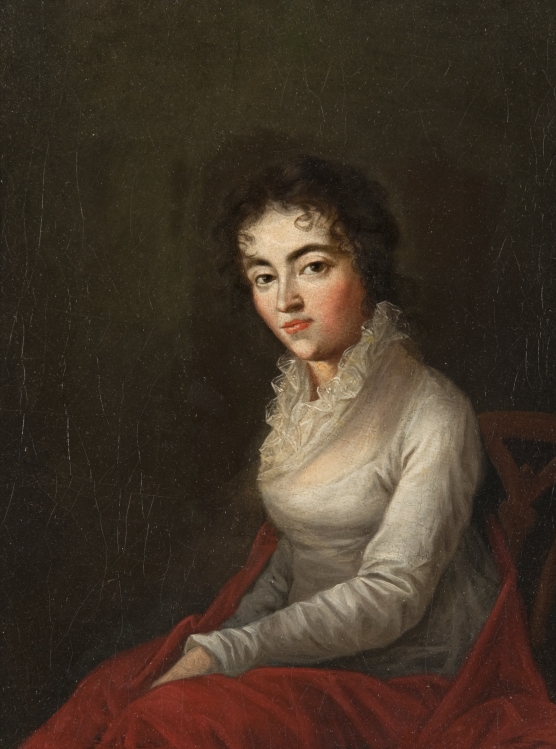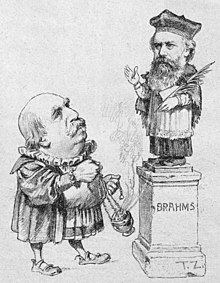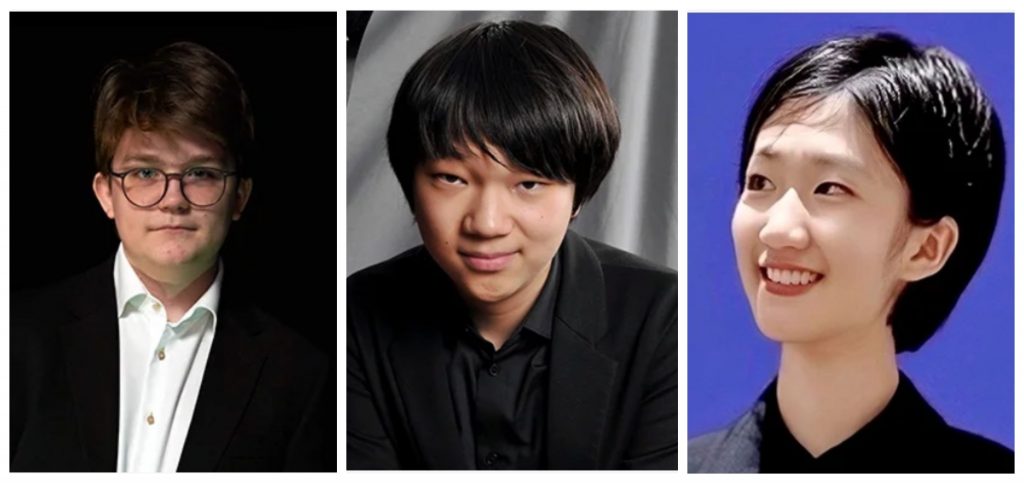By Daniel Hathaway
The Cooper International Piano Competition final round takes place on Friday at 7:30 at Severance Music Center, when the three remaining contestants (pictured) will perform concertos with The Cleveland Orchestra, David Robertson, conducting. Tickets are available online, where you can also link to a live stream.
On Saturday, the Kent Blossom Chamber Orchestra will join David Robertson & The Cleveland Orchestra in a 7 pm side-by-side concert at Blossom Music Center, featuring pianist Conrad Tao in John Adams’ Century Rolls. That will be preceded by a 6 pm prelude concert by the Kent Blossom Chamber Orchestra, Daniel Reith, conducting. The two ensembles will combine for Sarah Kirkland Snider’s Something for the Dark & Sibelius’ Symphony No. 1.
And on Saturday at 8 pm at Convivium 33 Gallery, the Cleveland Uncommon Sound Project (CUSP) will present a concert by keyboardist Eli Wallace, who specializes in improvised music for the prepared piano.
Click here to visit the ClevelandClassical.com Concert Listings page for more information.
NEWS BRIEFS:
Individual tickets for The Cleveland Orchestra’s 2023–2024 season at Severance Music Center go on sale on Monday, August 7 at 10 am. Cleveland Orchestra subscriptions are already on sale. Read a press release detailing the Orchestra’s new season here.
WEEKEND ALMANAC:
August 4 by Stephanie Manning

Intelligent and musically trained, Weber made a great match for Mozart. The composer wrote the soprano solos in his Mass in c minor for her, and she sang them in the premiere of the unfinished work. (Click here to watch a live performance by The Netherlands Radio Philharmonic Orchestra and the Netherlands Radio Choir in Amsterdam’s Concertgebouw on Easter Sunday, 2018). Additionally, her love for Baroque counterpoint influenced many of her husband’s works in that style.
“My dear Constanze is really the cause of this fugue’s coming into the world,” Mozart wrote to his sister Nannerl, attached to a copy of his Fantasy and Fugue, K. 394. “She scolded me roundly for not recording some of my compositions in this most artistically beautiful of all musical forms and never ceased to entreat me until I wrote down a fugue for her.”
When Mozart died in 1791, his 29-year-old widow stepped up to save herself and their two children from financial ruin. Proving herself to be a shrewd businesswoman, Weber paid off Mozart’s debts and became quite wealthy by obtaining a pension from the emperor, organizing memorial concerts, and publishing many of her husband’s works.
Mozart’s connection to the Weber family extended beyond his wife. Years before falling in love with Constanze Weber, he became smitten with (and was rejected by) older daughter Aloysia Weber, who later became a renowned singer and performed in multiple Mozart operas. The eldest daughter of the family, Josepha Weber, became Mozart’s first Queen of the Night.
When it came to his marriage to Constanze Weber, Mozart was hesitant to tell his father, who often disapproved of his romantic affairs. Eventually, however, Mozart wrote him a letter announcing his intentions.
“But who’s the girl I love? Well, don’t blow your top. ‘Surely not one of the Webers?’ Yes, actually, one of the Webers. Not Josepha, not Sophie… Constanze!”
August 5 by Mike Telin

While living in the States, she studied music at Bennington, but upon returning to Paris in 1946 she continued her studies at the Conservatoire National Supérieur de Musique, where she was a student of Darius Milhaud and Olivier Messiaen. Jolis served as Messiaen’s assistant at the Conservatoire from 1971 to 1974, and was appointed to the faculty in 1975.
An active composer since 1945, her output includes Opera, works for Orchestra and solo works with orchestra or ensemble, pieces for large ensemble, chamber music, and choral and vocal works which have been performed by Kent Nagano, Anssi Karttunen, William Christie, Håkan Hardenberger, and Sir Simon Rattle, as well as the Ensemble Intercontemporain, Les Percussions de Strasbourg, the Berlin Philharmonic Orchestra, the Orchestre de Paris, the Boston Symphony Orchestra, and the BBC Symphony Orchestra.
Jolas also has amassed a collection of awards from the Copley Foundation of Chicago, ORTF, the American Academy of Arts, the Koussevitzky Foundation, the Grand Prix National de la Musique, Grand Prix de la Ville de Paris, and the Grand Prix de la SACEM (Société des auteurs, compositeurs et éditeurs de musique).
In 1983 she became a member of the American Academy of Arts and Letters, and has held teaching positions at Yale, Harvard, Mills College, Berkeley, USC and San Diego University, Tanglewood, and the University of Michigan.
In recent years, her career has enjoyed a resurgence after she was “rediscovered” by Sir Simon Rattle. Click here to listen to a thoroughly engaging conversation with Berlin Philharmonic hornist Fergus McWilliam.
Click here for a performance of A Little Summer Suite (2015) and here for Letters from Bachville for orchestra (2019). Both performances are by the Boston Symphony under the direction of Andris Nelsons.
August 6 by Daniel Hathaway

Summing up Hanslick’s achievements in The Hungarian Review, Nicholas T. Parsons writes:
The times were propitious and newspapers were expanding to meet the demand from an increasingly cultivated bourgeois public for accessible but authoritative cultural journalism. When his career began mid-century, the Viennese competition in Hanslick’s speciality of music criticism was lamentable, as he put it: “stuffed with epithets and shallow enthusiasms, limp wit and phrase-making, unmanly heroisations and idolatry – echt wienerisch!” His first and perhaps greatest achievement was to raise musical appreciation to a professional level, diffusing his knowledge effortlessly in urbane prose, but dedicating himself to his task by playing every score right through before a performance. He would also do extensive background reading, for example of a Shakespeare play and commentary on it, before reviewing a Verdi opera. One lasting impact of his approach was that he addressed the work primarily and the performance secondarily, from which it followed that the quality of a work might not necessarily be obscured by inadequacy of performance, or, of course, vice versa…
And in a world-changing event, on August 6, 1945, the United States, with the consent of the United Kingdom, detonated the first atomic bomb over the city of Hiroshima, Japan (a second bomb was dropped over Nagasaki three days later).
Click here to watch a performance of Polish composer Krzysztof Penderecki’s 1960 Threnody for the Victims of Hiroshima for 52 string instruments, as performed by Sinfonia Varsovia led by Krzysztof Urbański at Penderecki’s 80th Birthday Celebration in Warsaw in November, 2013.




